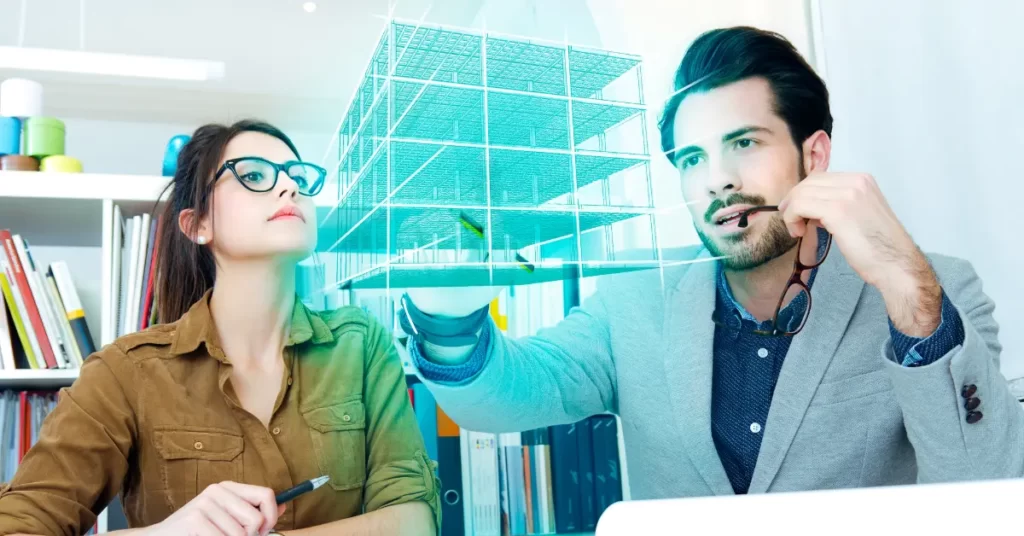In the ever-evolving landscape of design projects, the profound impact of Technology in Design Collaboration and communication cannot be overstated. As technology advances at an unprecedented pace, it has revolutionized the way designers work together, fostering a more connected and efficient creative process. This article delves into the transformative effects of technology on collaboration and communication within design projects, highlighting key tools, benefits, challenges, and future possibilities.

Transforming Creative Workflows with Technology in Design Collaboration
1. The Collaborative Spectrum: From Local to Global
Gone are the days when design collaboration was limited to in-person meetings and brainstorming sessions. Technology has transcended geographical boundaries, enabling designers from different corners of the world to seamlessly collaborate on projects. Virtual meetings, video conferencing, and real-time collaborative platforms have bridged the gap, allowing diverse teams to share ideas, provide feedback, and iterate designs in unison.
2. Real-Time Sharing and Feedback
The traditional back-and-forth of sharing design iterations through emails or physical printouts has given way to real-time sharing on cloud-based platforms. Designers can now instantly upload their work, and team members can provide feedback, suggest changes, and even make edits directly on the project files. This streamlined process not only accelerates decision-making but also fosters a more dynamic and iterative approach to design.
3. The Rise of Virtual Reality (VR) and Augmented Reality (AR)
The introduction of VR and AR technologies has introduced an immersive dimension to design collaboration. Designers can now walk through virtual prototypes, allowing them to gain a better understanding of spatial relationships and identify potential issues early in the process. This level of interaction enhances communication and minimizes misunderstandings among team members.
4. Challenges in the Digital Age
While technology has undeniably enhanced collaboration and communication in design projects, it comes with its own set of challenges. The digital realm can sometimes lack the personal touch of face-to-face interactions, potentially leading to misinterpretations and miscommunication. Moreover, the overreliance on digital tools can hinder the development of strong interpersonal relationships among team members.
5. Security and Privacy Concerns
With the convenience of digital collaboration comes the need for robust security measures. Design projects often involve sensitive intellectual property, and ensuring the protection of such data from cyber threats is paramount. Striking a balance between accessibility and security remains a challenge as design teams navigate the digital landscape.
6. The Road Ahead: Embracing Emerging Technologies
As we look to the future, the impact of technology on collaboration and communication in design projects will continue to evolve. Artificial intelligence (AI) and machine learning (ML) are poised to play a significant role in automating certain design tasks, allowing designers to focus on higher-level creative decisions. Additionally, the integration of AI-driven analytics could provide insights into design trends and user preferences, guiding teams toward more informed design choices.
In Conclusion
The transformation brought about by technology in the realm of design collaboration and communication is undeniable. The digital tools at our disposal have broken down barriers and expanded the possibilities for creativity, enabling designers to work together seamlessly across distances and disciplines. While challenges persist, the potential for growth and innovation in the design world remains boundless as we continue to harness the power of technology in our collaborative endeavors.
The evolution of technology has ushered in a new era of collaboration and communication in design projects, redefining the way creative minds interact and innovate. As we navigate the dynamic landscape of digital tools, virtual reality, and AI-driven solutions, it’s crucial to strike a balance between harnessing the efficiency of technology and preserving the essence of human connection.
By leveraging the strengths of both realms, designers can unlock unprecedented levels of creativity, efficiency, and precision, ensuring that the future of design collaboration remains a harmonious blend of human ingenuity and technological prowess. As technology continues to shape the design industry, the journey towards even more transformative possibilities is only just beginning.












